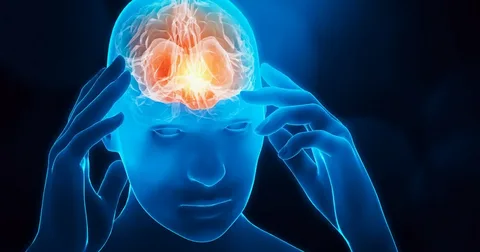Living cells are abundant with ribonucleic acid (RNA), crucial molecules that regulate genetic messages to ensure cell functionality. However, these essential molecules can also trigger cellular alarms. The presence of long, intertwined strands of RNA in viruses signals an invader, prompting the human immune system to initiate inflammation. Dr. Hachung Chung, intrigued by how the immune system distinguishes disease-causing viral RNA from normal RNA, has now directed her research towards studying brain diseases like Alzheimer’s, amyotrophic lateral sclerosis (ALS), and lupus brain fog. Her recent findings suggest that the erroneous sensing of our own RNA in the brain may be responsible for chronic inflammation in such conditions.
Chung, an assistant professor of microbiology & immunology at the Vagelos College of Physicians and Surgeons, believes that neurodegenerative diseases present a challenging frontier in biomedicine, with therapeutic development progress being slow and perplexing. She envisions that by harnessing the immune system effectively, there may be a breakthrough in the treatment of these diseases.
The immune molecules responsible for detecting viruses, known as pattern recognition receptors, can identify viral double-stranded RNA structures. Dr. Chung’s research has shed light on the role of the RNA modifying enzyme ADAR1 in maintaining biological equilibrium. Her investigations have revealed that ADAR1-mediated alterations to our double-stranded RNA molecules prevent constant inflammation triggered by pattern recognition receptors in healthy tissues.
While the mechanism by which ADAR1 conceals human RNA from pattern recognition receptors remains unclear, Chung’s research has made significant strides in understanding the complexities of inflammation in the brain. Recent studies from Chung’s lab have shown that the absence of ADAR1 in neurons leads to heightened levels of double-stranded RNA structures, culminating in inflammation. This cycle of inflammation can be challenging to halt, as it perpetuates itself by increasing pattern recognition receptors in neurons.
The findings not only provide insights into the pathology of Aicardi-Goutières syndrome (AGS) but also offer a potential explanation for the persistent inflammation observed in conditions like lupus brain fog, ALS, and Alzheimer’s disease. By elucidating the mechanisms underlying brain inflammation, Dr. Chung’s research opens new avenues for understanding and potentially treating these debilitating neurological conditions.
*Note:
1. Source: Coherent Market Insights, Public sources, Desk research
2. We have leveraged AI tools to mine information and compile it

